Bô ‘later’
Macaronesia (formerly called the Atlantides Islands) includes all islands and archipelagos in the North Atlantic Ocean from the Azores to Cape Verde, Canary Islands, Selvagens, and Madeira. Macaronesia lies between latitudes of Lisbon and Dakar. Cape Verde or Cabo Verde is a destination little known to the general public. Cape Verde is only a few hours flight from any European cities, a very exotic destination, and rich in contrasts and diversity, allowing the traveler to experience several trips in one. Geographically, the archipelago of Cape Verde covers an area just over 1,557 square miles, is located 350 miles off the coast of Senegal and includes ten volcanic islands and eight islets. From the sky, the archipelago looks like a crab claw. The islands are divided into two groups, the Sotavento islands (leeward) to the South, and the Barlavento islands (windward) to the North.
To discover this « Petit Pays » (Tiny Country), as it was called by the Cape Verdean diva Cesária Évora who died in late 2012, let’s start with the largest island of the archipelago both in size and population. Santiago, covers an area of 383 square miles and is located between the Islands of Maio to the West and Fogo to the East. It is one of the Sotavento islands and is also home to the capital city of Praia in which the Platô is home to beautiful colonial houses and buildings like the presidential palace. There are also many grocery stores called lòjas where you can buy all kinds of products, including food, cosmetics, alcohol, cigarettes. The majority of these lòjas is owned by members of the Chinese community. From China to Africa in a few steps, visit Sucupira market, a vast “souk” full of many colors and noise. Here you can find everything and anything: clothes, music, appliances, furniture, handicrafts. It is the largest market of the city, and the atmosphere is very African !

Santiago Ribeira Grande
About 10 miles from the capital Praia is Cidade Velha, once called Ribeira Grande. In 2009 Cidade Velha became the first UNESCO World Heritage site in Cape Verde. This small town of 3,000, called Sidadi in Creole, was the capital of Cape Verde for nearly three centuries from 1462 to 1770. But pirate attacks and looting by the English privateer Francis Drake provoked its fall… The town was the first European settlement in the tropics and after the discovery of the Americas it became an important port for trading slaves and thereby the second richest city in the Portuguese realm. The Fortress of São Filipe, built in 1585 during the reign of Philip I of Portugal, overlooks the Bay and offers beautiful panoramas. The fort is home to a defense artillery system and walls along the coast that make possible defense against simultaneous attacks by land and sea. But the fort is insufficient to prevent all attacks by outsiders for, in 1712, the city was overrun by a French pirate named Jacques Cassart. Strolling through the streets of the Cidade Velha, we visit the remains of the Cathedral, built by the first Portuguese settlers and then walk along the Rua Banana, so named because the street is banana-shaped, with its traditional houses, and end our journey in the Pelourinho and its superb 16th century pillory.
The landscape of the island of Santiago is mostly desert, but in some places, there are very green agricultural valleys with banana, mango, papaya, and avocado trees, as well as prickly pear cactus. Recycled car tires are used to hold the branches of the latter together, and to prevent them from touching the ground. The highest point on the island is Pico da Antónia located in the south and 4,573 feet above sea level. Its summit is without vegetation except for some cacti trying to grow on its steep volcanic slopes. Finally, our journey through the island offers beautiful images of women of all ages carrying goods balanced on their heads, of schoolchildren in uniform going and from school, of groups passionately playing “Awale,” an African strategy game with bean seeds -“You cheated, where did you put your bean? Well, uh I might awalé (ate)…” Finally the picture would be not be complete without a final stop at Tarrafal in the North, home to THE beautiful beach of the island.

Santiago Tarrafal
São Vicente, the second largest island with an area of 88 square miles, is a small side-trip. It is one of the Barlavento Islands in the northeastern part of the archipelago, between Santo Antão and Santa Luzia. It is the cultural island of the archipelago and takes its name from the fact of its discovery on Saint Vincent’s day in 1462. It is one of the driest islands of Cape Verde islands; its lunar landscape seems inhospitable. Mindelo, the main city, is built around Porto Grande Bay, a large natural harbor providing an ideal refuge for boats. The economy of the Island was immediately based on commerce, and Mindelo rapidly became the main port of Cape Verde, attracting English companies which established a coal station to supply the hundreds of ships going to and from the Americas. By 1875, Mindelo was the largest coal port in the South Atlantic. The city fully enjoyed its golden age, but after this period of greatness, this « Creole Roma » entered, like its big European sister, a period of decadence. At the turn of the 20th century, Mindelo‘s economy declined as diesel ships became common and the need for a coal station disappeared. Also with the appearance of more modern competing ports such as Las Palmas in the Canary Islands and Dakar in Senegal, cosmopolitan Mindelo, entered a period of terrible decline. The port was completely abandoned, and the city left to its fate. The city finally lost its status as an economic center ! Today Mindelo is gradually modernizing through real estate development and speculative investments. Many old buildings in the city center are being destroyed to make way for new high-rises. Despite this change, it is still very pleasant to walk in Morada, the historic center, with its colorful houses and to wander between old English customs buildings and those of English companies following a tourist route from the governor’s palace to the Praça Nova (new square). On this new the ritual of « bo ti ta fazé grog » takes place every weekend. People, especially the young, dressed and coiffed for the occasion go clockwise around the square as oxen or mules turn move in the opposite direction to turn sugar cane into grogue. Hence the term « bo ti ta fazé grog » – you make the grogue!

Sao Vicente Mindelo – Fishing boats
Manèr’ k’ bô ta? (everything is fine?). Time moves slowly in Mindelo, at a relaxed Mediterranean pace or like British phlegm, perhaps a mix of both. Fishing boats line the waterfront opposite Monte Cara, a face shaped mountain. A picturesque fish market offers a wide variety of fish. On one side, women sell fish and on the other men take care of the preparation: cleaning, peeling, preparing the nets… A small Anedóta: how do you know that the fish you buy is fresh? So… no idea? The trick is to lift the gills and stick your tongue in… if it stings, don’t buy it… “What, my fish is not fresh ? “Demands Cétautomatix, the blacksmith in Asterix’s and Obelix’s village, who loves to question the freshness of Ordralfabétix’s fish…! Afterwards we pass through the Praça Estrela (Square of the Star), which hosts a huge bazaar (after the fish market, we have the container market) where everything is sold: clothes, shoes, body and hair lotions… Most sellers come from West Africa (Senegal, Mali, Guinea). Plastic containers contain second-hand clothing mixed with some new clothes, just to confuse the customs officers. Once your purchases is made, do not hesitate to visit one of many couturiers who line the streets for minor alteration or hems… Then follow the recommendation of five fruits and vegetables a day and head for the municipal market swarming with products from neighboring islands (including Santo Antão): mangoes, papayas, bananas, coffee, goat cheese… and of course the famous grogue. I give you a second chance… are you ready? How can you tell if a grogue is adulterated or not? Um, um… cat got your tongue, the answer is… pour a few drops into the palm of your hand and rub both hands together vigorously until the alcohol evaporates. Then, smell your palm. If you smell something other than sugar cane, avoid drinking the grogue!
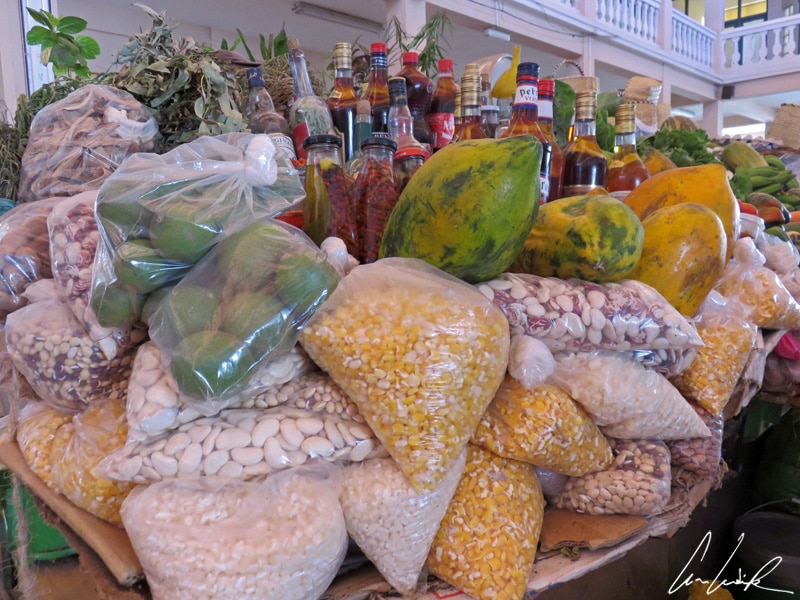
Sao Vicente Mindelo – Municipal market
Finally, as I mentioned at the beginning, Mindelo is the cultural capital of the archipelago. To pass through Mindelo (and by extension from Cape Verde) without knowing anything of funaná (traditionally played on accordion with rhythm provided by rubbing of a knife blade on an iron bar), batuko, Catchupa or morna music, is unthinkable. Cape Verdean music offers a wide variety of musical styles, many composers and countless performers. M’ tá gostá d’ouví músika (I like listening to music), Dá um tok na viola (Play guitar). Just let yourself be lulled by the music of Mayra Andrade, the latest revelation of Cape Verdean music. Her modern Brazilian arrangements of traditional Cape Verdean morna music bring a pleasant freshness to the beautiful Cape Verdean texts proving that morna music is not ready to die! If you are more attracted to painting, check out the works of Manuel Figueira… His colorful family home is located on the seafront, the must-see Casa Figueira. Finally, if you are just curious, you cannot be bored admiring the works of many local artists… We told you not to throw away your old toothbrushes! Enthroned in your living room, they could be a sensation for your friends…
Até log’!
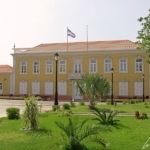

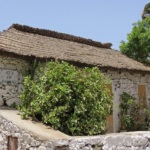

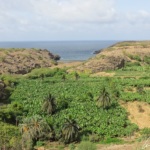
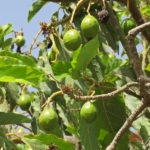



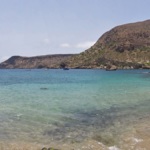
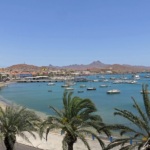
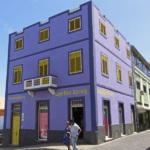
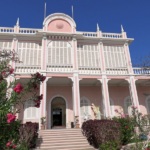

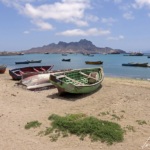
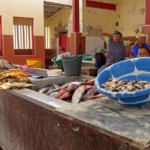
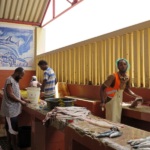
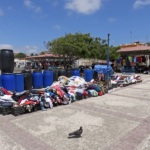
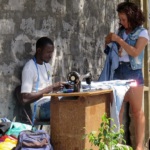
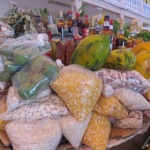

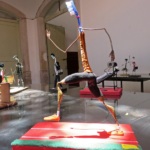
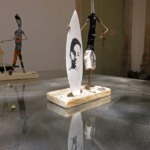


This is just amazing, its like a beautiful hidden gem. I am adding this to my bucket list.
If you appreciate the sea, outstanding mountain landscapes with great hiking, and a convivial people with the time to strike up a mournful tune over a glass of thick red wine, then these barren lands pounded by a frothing white ocean are for you !
Reading this article made me think of my grandparents because they often told me that when they were kids the urbanization was not developed as I have seen. In Capo Verde, they are really lucky on preserving their environment, who knows maybe this has a good effect even to people. Thank you for your post, I really liked reading it.
In spite of its small size, Cape Verde is a destination that promises diversity, with something to appeal to every kind of traveler ! These islands have a captivating blend of mountains, beaches and peaceful seaside villages and have remained unspoiled, maintaining their wealth of natural beauty. Hope it will stay like that…
All of macronesia sides wonderful! Incidentally I was excited to see the mention of Francis Drake – I’ve actually a tattoo with one of his quotes on my arm! “Sic parvis magna!”
Sir Francis Drake was a famous sailor and navigator, and the first Englishman to circumnavigate the globe… but also a pirate ! The 1585 raid by England’s Sir Francis Drake is really an interesting part of Cape Verde history.
Thanks for the post. Had heard about it but never got to know about it in details. Should be on a must visit list.
These islands have remained unspoiled, maintaining their wealth of natural beauty, without falling short of embodying a lively Island culture and character, and a spice for life that brings visitors back time and time again 🙂 Cape Verde should definitely be on your bucket list.
This is very informative! For a someone like me who hasn’t been there, this is enough information to get me started researching more about this. And thanks for the recommendations as well! I could totally use that if ever I come here..:)
With it’s unbelievably clear waters and breathtaking natural allures, Cape Verde should definitely be on your bucket list. If it’s not, it soon will be…
Thanks for the information! I will have to add these islands to my list, are there any spots to avoid?
Cape Verde is a popular beach holiday destination (on Sal, Boa Vista and Maio) but for those who prefer to get out and about there are a number of options available. These islands are rich in contrasts and diversity, allowing the traveler to experience several trips in one. There is no spot to avoid as Cape Verde is really pretty, although it depends a lot on the island that you are planning to visit.